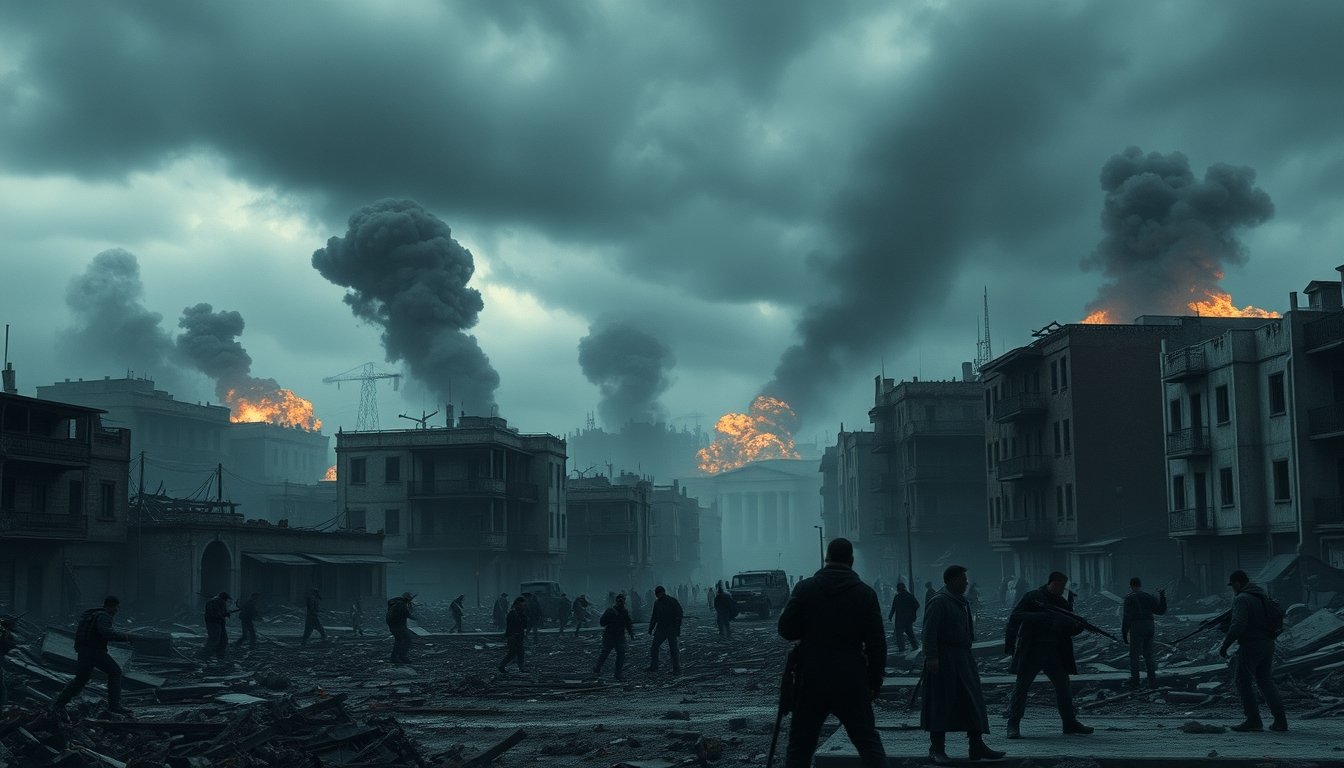The Battle of Leningrad was a historic confrontation during World War II in which Nazi forces, along with Finnish allies, besieged the city of Leningrad (now Saint Petersburg) in Russia. This siege, which lasted from September eighth, nineteen forty-one, to January twenty-seventh, nineteen forty-four, was one of the longest and most devastating of the war, lasting about eight hundred seventy-two days. The siege became not only a military ordeal but also a symbol of human endurance and resilience in the face of impossible odds.
Leningrad, located in northwestern Russia near the Baltic Sea, was a key industrial and cultural center for the Soviet Union and a strategic target for Hitler. The city housed critical manufacturing facilities, producing arms and ammunition essential to the Soviet war effort. Capturing Leningrad would cut off vital resources and weaken the Soviet Union both strategically and psychologically. Hitler’s goal was to devastate the city without taking it directly; he ordered that Leningrad be starved into submission rather than conquered by force. German troops and their allies encircled the city, blocking nearly all supply routes by land and cutting off Leningrad’s residents from the outside world.
The Soviet Union devised one narrow but life-saving supply route across Lake Ladoga, known as the “Road of Life.” This treacherous route, traversable only during the winter when the lake froze, was used to transport limited supplies to the besieged city. Despite the severe risk of enemy fire and harsh conditions, convoys of trucks crossed the frozen lake, bringing in food, medicine, and other essentials, while evacuating civilians whenever possible. However, the supplies were barely sufficient, and widespread starvation took a brutal toll on the population.
As food became scarce, the residents of Leningrad faced unimaginable suffering. Rations were severely reduced, and people were forced to survive on minuscule amounts of bread made from sawdust and other inedible fillers. Citizens resorted to desperate measures to survive, including eating pets, leather belts, and even wallpaper paste. Extreme winter temperatures added to the misery, with shortages of fuel and basic necessities forcing people to burn furniture for warmth. Malnutrition, disease, and relentless bombing by German forces claimed the lives of over one million people, including countless civilians who had little choice but to endure or perish.
Despite these horrors, the people of Leningrad displayed extraordinary resilience. Those who survived helped organize the city’s defense, digging trenches, building barricades, and even maintaining cultural life to keep morale up. The city’s symphony orchestra famously performed Shostakovich’s Seventh Symphony, also known as the “Leningrad Symphony,” as a testament to the spirit of endurance. This performance, broadcast throughout the city, rallied the people and boosted Soviet morale, symbolizing their refusal to surrender.
The turning point came in January nineteen forty-three when Soviet forces managed to break through part of the German blockade in a limited offensive. This allowed more supplies to reach the city and provided much-needed relief, though the siege continued for another year. Finally, on January twenty-seventh, nineteen forty-four, the Red Army succeeded in fully lifting the siege, marking an end to one of the longest and deadliest blockades in recorded history.
The lifting of the siege was a critical moment in World War II. It allowed the Soviet Union to redirect resources to other fronts, strengthening its position against the Axis powers. The victory in Leningrad became a powerful symbol of Soviet resilience and marked a turning point in the Eastern Front. The immense sacrifice and courage of Leningrad’s residents became a defining chapter of Soviet history, commemorated to this day as a testament to the human spirit’s capacity to withstand unimaginable adversity.



